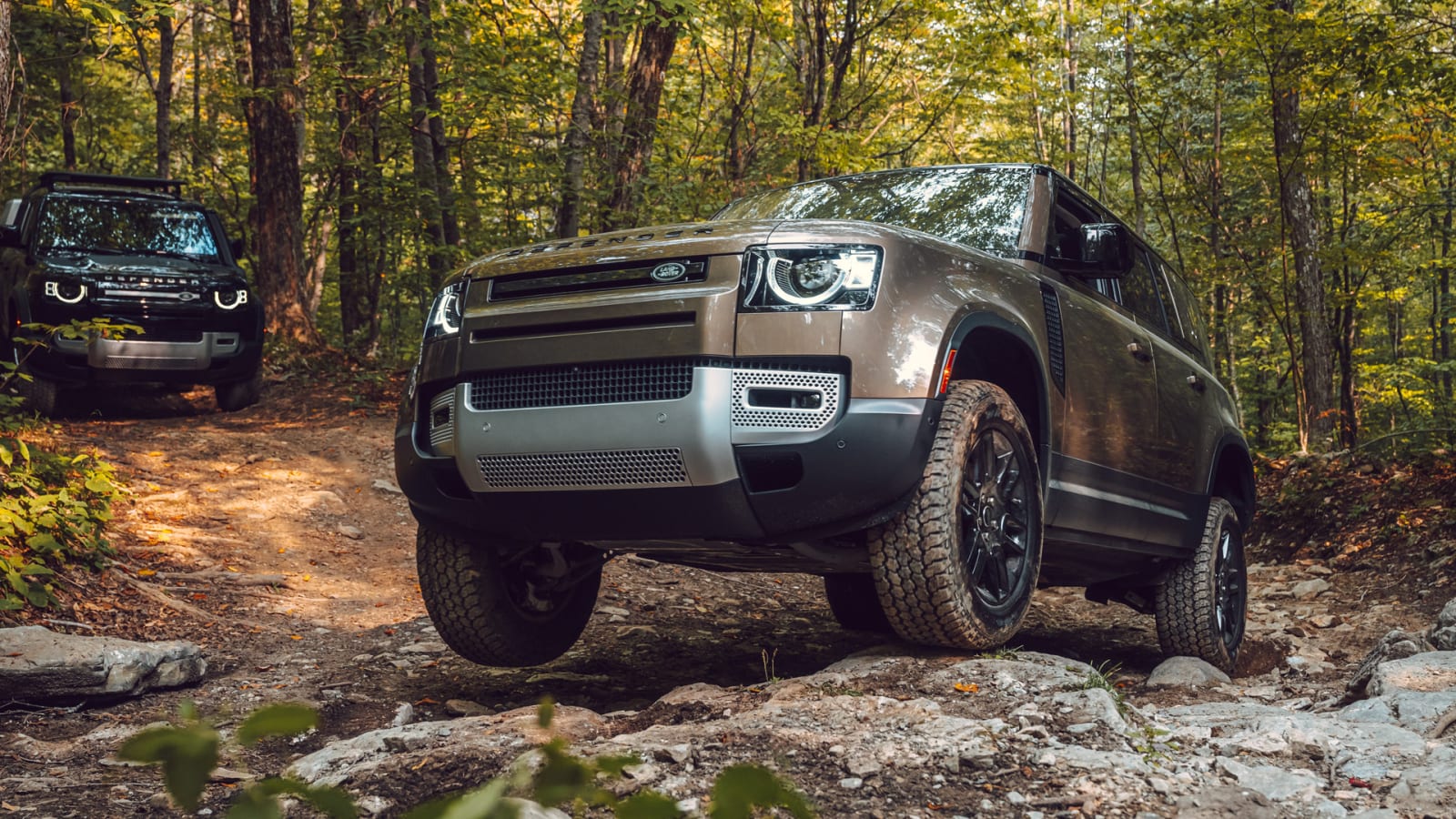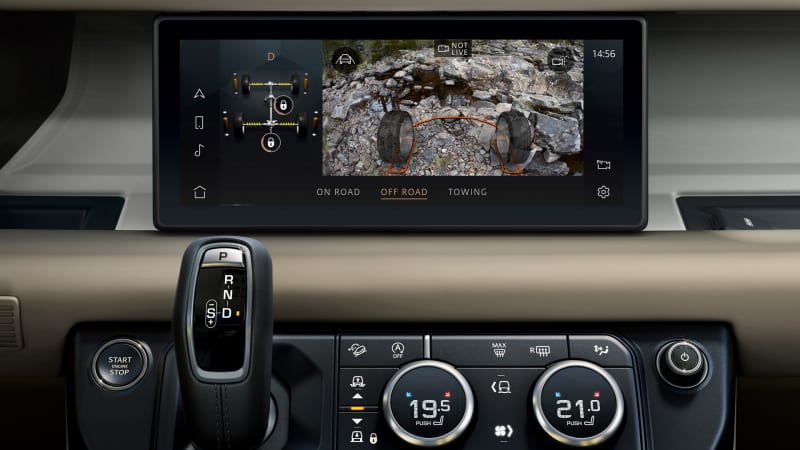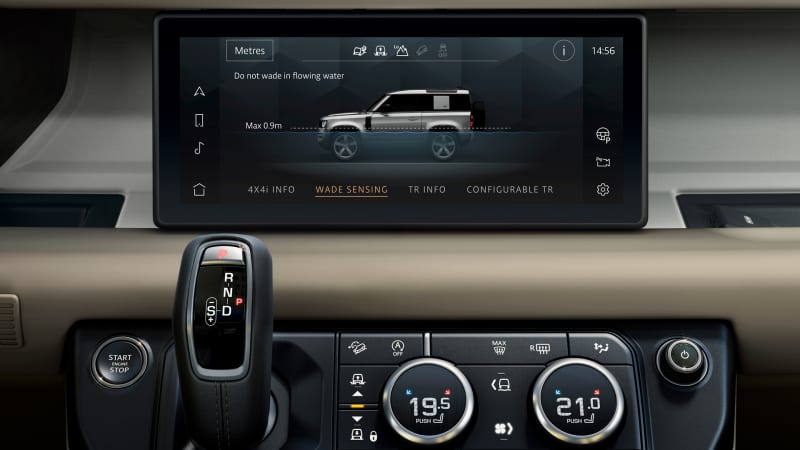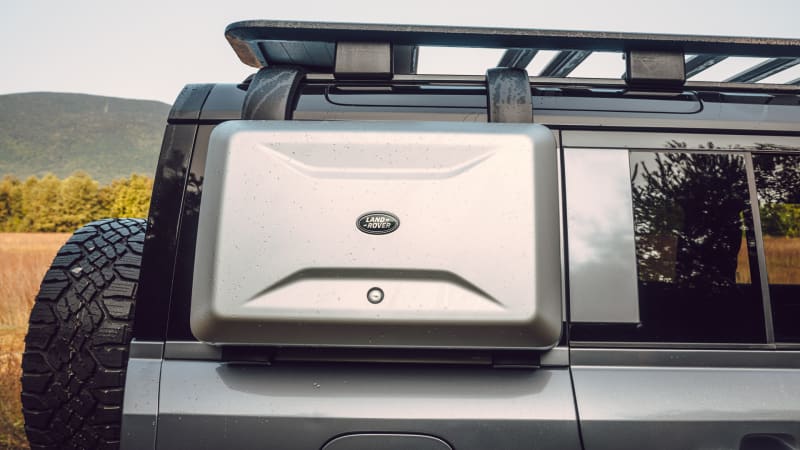MT EQUINOX, Vt. – Perhaps Americans have had their fill of wimpy, interchangeably styled crossover SUVs. Or, testosterone has found its way into our water supply. Either way, manly 4x4s with authentic designs and rich backstories are enjoying their moment, from the white-hot Ford Bronco and Jeep Wrangler to the Mercedes G-Class and an upcoming, rehabilitated electric Hummer.
Britain’s storybook entry is the Land Rover Defender, whose globetrotting, post-WWII history ranged from African treks to movies such as the lion-loving 1966 doc “Born Free.” Yet, it only made an obscure cameo for the United States between 1992 and 1997.
After years of false starts and dashed hopes, and further Covid-driven production delays, the first all-new Defender since 19-freaking-46 is here, including for us long-denied Yankees. And the 2020 Land Rover Defender is nothing short of brilliant, as we discovered over three days in upstate New York and the mountains of Vermont. That included a climb up the green shoulders of Vermont’s Mount Equinox, the tallest summit in the Taconic Mountains. It’s a trip that takes tourists 20 minutes on the 5.2-mile Skyline Drive, the route for America’s oldest auto hillclimb event. We, on the other hand, would be taking the long way up on Mount Equinox’s dauntingly steep, bouldered trails. It would take three hours, but the new Land Rover ate it all up and had us begging for more.



The Defender’s unstoppable off-road skills come as no surprise, between its stiff “D7x” all-aluminum monocoque, class-topping approach and departure angles, optional adjustable air suspension, new screen-based Terrain Response system, two-speed transfer case, locking center differential and optional active rear-locking diff. Those are joined to systems that — should you choose — take all the guesswork out of four-wheeling, including a water-depth wading sensor, camera views of the ground below the hood, and the ability to set a crawling speed and negotiate terrain semi-autonomously while the systems sort everything out.
The surprise was that the Defender, at least in 395-horsepower guise, feels as capable on-road as off. The forceful acceleration, throaty inline-six sound and high-design cabin make even a loaded Wrangler feel like the relatively crude truck it is. While the Defender may look deceptively mall-friendly compared with the Jeep, its 11.5-inch ground clearance and 35.4-inch wading ability both top even the Wrangler Rubicon’s. And where the Jeep accepts curves grudgingly, the Defender can attack them. The Landie handles better than a Mercedes G 550, is nearly as quick from 0-60 mph (the four-door Defender 110’s sprint of 5.8 seconds falls a mere two tenths short) and this six-cylinder version’s $63,650 base price (maxing out at $81,250 for the swanky Defender X) undercuts the base $132,000 Mercedes G 550 by nearly $68,000.
If one can live with a 2.0-liter, 296-hp turbo four, and its modest 7.7-second trip to 60 mph, the Defender 110’s $51,250 starting price is on par with a fully stuffed Wrangler Rubicon.
That base price gets even lower for 2021 at $47,450 thanks to the two-door, shorter-wheelbase Defender 90 that should start arriving early next year from the factory in Nitra, Slovakia. Besides its smaller size and door count, the 90 will offer a full-length, accordion-folding fabric roof that Land Rover says will allow second-row passengers to “stand up” for the full safari experience. Or perhaps during cocktail hunts in South Beach.



Of course Land Rover will help you boost the tab with any of 170 available accessories, including the roof’s signature black “Safari Rack” and a side-mounted Gear Carrier. Multiple add-ons are bundled into four easy-to-shop accessory packs: Explorer, Adventurer, Country and Urban.
We drove what seemed like an especially representative model: a 2020 Defender 110 SE that starts at $63,600 and reached $72,780 with options. Those included the $1,750 Off-Road Pack that adds the electronic active diff, 120-volt outlet and 19-inch Goodyear Wrangler off-road tires. It’s a looker, including a $600 sandy-brown paint called Gondwana Stone, paired with a contrasting black roof. The Defender’s handsome color palette also includes a “Tasman Blue” with white roof that recalls the world’s toughest Mini Cooper, as well as three choices that allow for an optional protective body wrap with a show-offy satin finish, a first on any Rover, that’s easy to remove or repair.
Our Rover convoy was replete with those plus a variety of other thoughtful touches that show the style of Gerry McGovern, Rover’s cocky-yet-acclaimed design director. The elemental, near-vertical front end spanned by a natty bar, emblazoned with the Land Rover badge, and a dimpled metal fascia. Anthropomorphic LED headlamps that resemble glowering eyes with a pair of bright lashes for each. For the rear and its side-hinged tailgate, the external-mounted rear tire is key to the ultra-short body overhang.
The interior’s modular, partially naked architecture is a design highlight. That includes a structural die-cast, powder-coated magnesium alloy beam (with grab handles!) that spans the dash. Passengers in the spacious rear get their own sturdy grab handles on inner B-pillars, ideal for body-tossing off-road maneuvers. Door rivets and painted surfaces are exposed in retro-industrial style. A pair of skylights integrated into roof pillars are a production-car first, and show serious engineering chops. Rubberized flooring is easy to brush or wipe clean, and a stowable fabric cargo cover is miles better than the usual bulky, clumsy roller-style cover. The entire cabin beautifully walks the line between functional and posh, ideally in a pair of designer Wellies.
Standard models get no-nonsense cloth seats, with S and SE trims pairing grained leather with woven-textile inserts whose tough, tactile surface pays homage to vintage canvas Rover tops. Upper-crust HSE and Defender X models add Windsor leather. Customers who’d like to bring the woods inside can opt for open-pore, rough-cut walnut or smoked dark-oak veneer.
Rover’s new “PIVI Pro” infotainment system, with its 10-inch screen, is wedged smartly into the dashboard cubby. Yes, there’s still a learning curve, and certain non-infotainment functions, such as heated seats, are buried in screen menus rather than accessible from an analog switch. Yet the PIVI Pro’s speed and smartphone-style operation represent major leaps in useability over Land Rover’s previous, hapless units, including over-the-air software upgrades. A pair of Meridian audio units, including a 14-speaker beauty, are options.




Clustering the screen and main controls within that magnesium frame makes room for another cool feature: An optional front-row center jump seat that allows three-across seating, with reasonable short-trip comfort. With the 110’s available child-sized third-row seats, that jump seat (also offered in the 90) lets buyers choose between seating for five, six or seven(ish).
Both engines are paired with an eight-speed automatic transmission, whose gear lever doglegs from the center stack and falls perfectly to hand for manual changes in Sport mode. And Type A owners will definitely favor the six-cylinder Ingenium engine, a mild hybrid unit that mates a twin-scroll turbocharger with a 48-volt electric supercharger and small lithium-ion battery. On gorgeous tangles of New England roads, the six showed off its lusty 406 pound-feet of torque, dispatching lesser SUVs with the merest squeeze of throttle. Considering the Defender’s purpose-built nature, its soaring height and enormous wheel travel, its on-road body control and confidence are almost uncanny. So too, the quietness of the cabin.
On a second off-road trip to the Land Rover Experience Center in Vermont — near the Equinox Resort whose property first hosted guests in 1769 — the Defender negotiated the gnarliest trails and deep-water baths with ease, reaffirming its status as the hardiest member of the Rover family.
Yes, the wait has been long. And the struggling Jaguar Land Rover, beset by external woes from Brexit to Covid, could use some good news right about now. The Defender is that good news. It deftly balances Land Rover heritage and nostalgia with a 21st-century approach. It blends design, luxury and on- and off-road performance like no SUV near its price. Ford’s 2021 Bronco looks like a smash hit on paper, starts around 30 grand, and will top out near $60,000, versus the Rover’s $47,450 floor and nearly $97,000 ceiling — so it’s not exactly apples-to-apples. But this much seems certain: Ford’s body-on-frame truck, with a maximum 310 horses and 400 lb-ft, simply won’t match the Defender in power, luxury, technical sophistication or performance. For one, Rover says its all-aluminum monocoque brings three times the chassis stiffness of any body-on-frame design, a huge edge in solidity, interior sound levels and precise handling. If owners can afford the contract, this prime Defender is worthy of a first-round pick.
Related Video:
